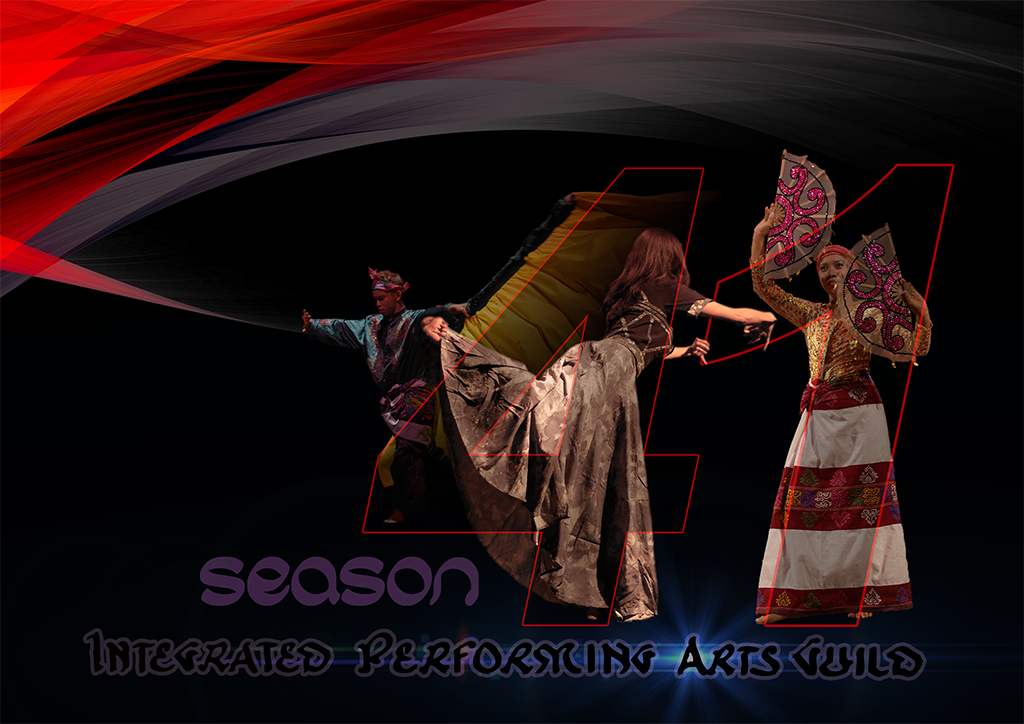
COURSES IN PERFORMANCE and PRODUCTION
The INSTITUTE for PERFORMANCE and ART GENRE STUDIES (IPAG Studies) is the realization of an academy of the performing arts of the Integrated Performing Arts Guild (IPAG).
Distinct from the conventional academy, IPAG Studies is rooted in local lore and expressions (in our locality the Southern Philippines) deriving forms and processes from these sources.
The principles of Transcreation and the constructs of Representation, Meaning, and Identity frame the organic logic in the courses offered here.
Pedagogically-based performance studies and practice combine in a formalized (structured) manner adapted from already-implemented modules and further sharpened as the programs go through their directions.
In the curriculum will be theory-principle-, process-, and practice-based modules re-structured adapting the skeleton of Western Theater engagements but sourced from: indigenous dances (e.g., Tig-Ani, pangalay, eskrima, etc.), rituals transcreated (sinulog, kawing, Marinao, buklod, etc.), narratives distilled (Moro-American wars, darangen, agyu, etc.), music (bayok, limbay, darinday, etc.) and oral literature and performance platforms (comedia, sinulog, poetry, etc.).Outcomes will be “progressive,” meaning learning results will be evaluated as students move from one level into the next starting with general short-term workshop-courses to subjects framing practice with principles.
OBJECTIVES.
- (Long term) A dynamic inclusive and interactive performance practice evolved from local cultural resources in expressions, craft, processes, and engagements of works with the highest possible artistic standards;
- (Long term, Cultural Enhancement) Social cohesion with marked identities signifying the strengthening of cultural fibers;
- Institutionalized pedagogy providing the inputs for this performance practice;
- Wide documentation of performance practices for reference and utility;
- Education system of Performance in place, decentralized, involving the collaboration of teachers, cultural workers, and practitioners from all regions;
- Significant contributions to the Creative Industry, as indicated by quantifiable indicators including an increase in audience engagements through a wide base of patrons and supporters; and,
- Active involvement in social and national issues as mirrored in the performances

A complement of learning and craft-enhancement resources reinforces the integrity of any Performing Arts company, the IPAG not an exception. Over four decades of practice have established a pedagogy and method summed up by 3Ps: Praxis, Pedagogy, and Production, and Aesthetics tagged “Hagup sa Kasinatian.” (embraced by the experience)
The methodology merges a system integrated from the forms and intents of the performative expressions of local communities (for IPAG, North-Central Mindanao) transcreated to engage present audiences.
Such pedagogy, already presented in wide engagements in various communities in the Philippines and abroad, has been established to characterize the IPAG format including its creative processes.
In these pages are portions of these resources taken from books (its Founder-Artistic Director has published six so far, and its Founding Chairperson establishing the methods of the TauSug “pangalay,” its biomechanics appropriated for the IPAG dance format).
Such migrations of forms and intents from their original spaces and contexts have developed principles of Transcreation and Distillation notable in these production processes, their staging illustrated in major dance-music productions that have been acclaimed in over a hundred festivals worldwide.
The same principles and pedagogy have been adapted into the program of the pioneering MSU-IIT Center for Culture and Arts (CCA) Studies, its founder being the IPAG Artistic Director. The Program takes an innovative stance in its studies of the Arts as representations of culture.
We share these resources, here conveniently clustered according to their process of formations, pooled from books, AV documentation, slide presentations, and the like.
Even in our public sharing, we request citations and acknowledgment of resources should these be cited.




